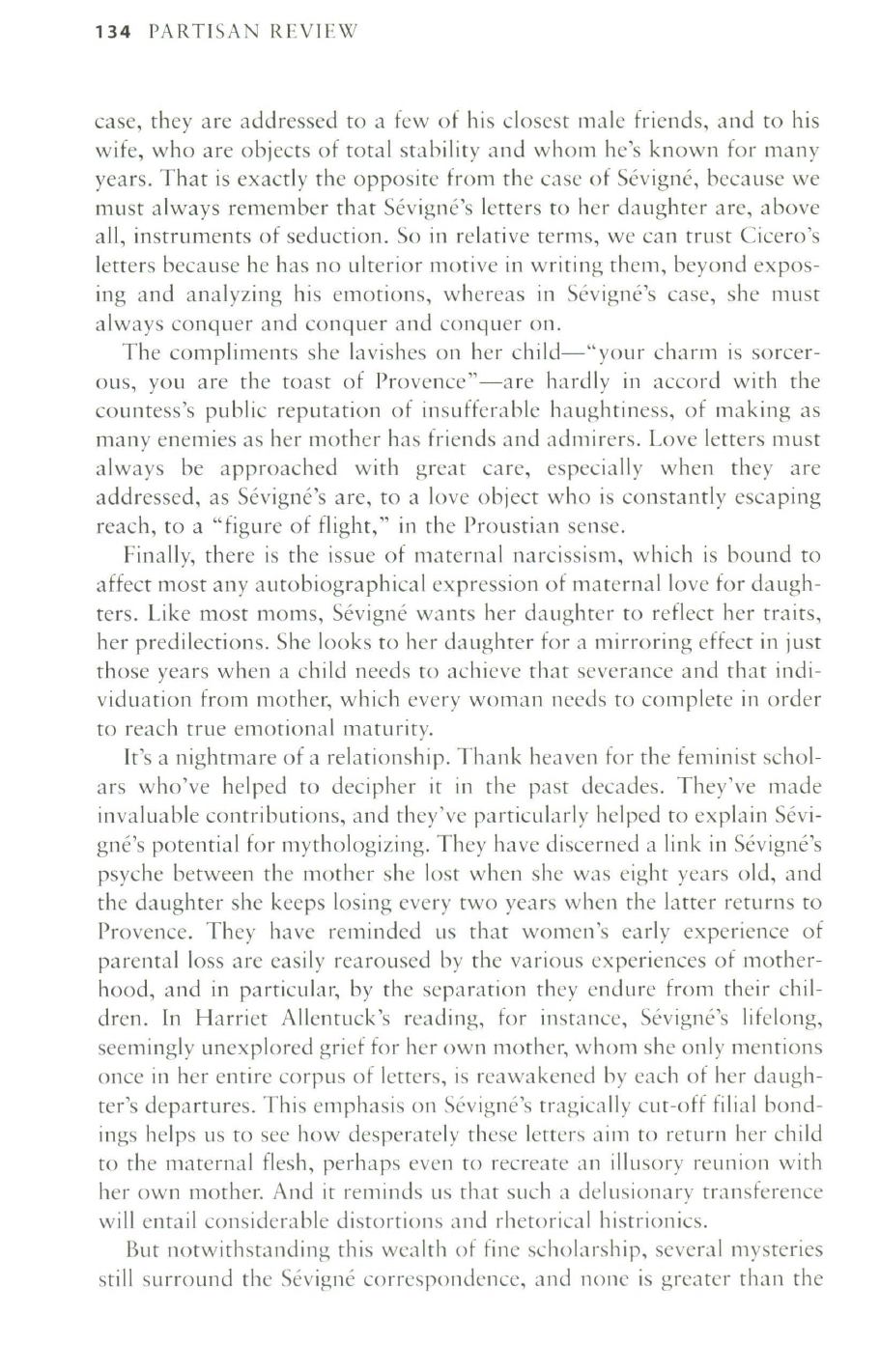
134
PARTISAN REVIEW
case, they are addressed to a few of his closest male friends, and to his
wife, who are objects of total stability and whom he's known for many
years. That is exactly the opposite from the case of Sevigne, because we
must always remember that Sevigne's letters to her daughter are, above
all, instruments of seduction. So in relative terms, we can trust Cicero's
letters because he has no ulterior motive in writing them, beyond expos–
ing and analyzing his emotions, whereas in Sevigne's case, she must
always conquer and conquer and conquer on.
The compliments she lavishes on her child-"your charm
IS
sorcer–
ous, you are the toast of Provence"-are hardly in accord with the
countess's public reputation of insufferable haughtiness, of making as
many enemies as her mother has friends and admirers. Love letters must
always be approached with great care, especially when they are
addressed, as Sevigne's are, to a love object who is constantly escaping
reach, to a "figure of flight," in the Proustian sense.
Finally, there is the issue of maternal narcissism, which is bound to
affect most any autobiographical expression of maternal love for daugh–
ters. Like most moms, Sevigne wants her daughter to reflect her traits,
her predilections. She looks to her daughter for a mirroring effect in just
those years when a child needs
to
achieve that severance and that indi–
viduation from mother, which every woman needs to complete in order
to reach true emotiona I maturity.
It's a nightmare of a relationship. Thank heaven for the feminist schol–
ars who've helped to decipher it in the past decades. They've made
invaluable contributions, and they've particularly helped to explain Sevi–
gne's potential for mythologizing. They have discerned a link in Scvigne's
psyche between the mother she lost when she was eight years old, and
the daughter she keeps losing every two years when the latter returns to
Provence. They have reminded
LIS
that women's ea rly experience of
parental loss are easily rearoused by the various experiences of mother–
hood, and in particular, by the separation they endure from their chil–
dren. In Harriet Allentllck's reading, for instance, Sevigne's lifelong,
seemingly unexplored grief for her own mother, whom she only mentions
once in her entire corpus of letters, is reawakened by each of her daugh–
ter's departures. This emphasis on Sevigne's tragically cut-off filial bond–
ings helps us to see how desperately these letters aim to return her child
to the maternal flesh, perhaps even
to
recreate an illusory reunion with
her own mother. And it reminds
LIS
that such a delusionary transference
will entail considerable distortions and rhetorical histrionics.
But notwithstanding this wealth of fine scholarship, several mysteries
still surround the Sevigne correspondence, and none is greater than the


